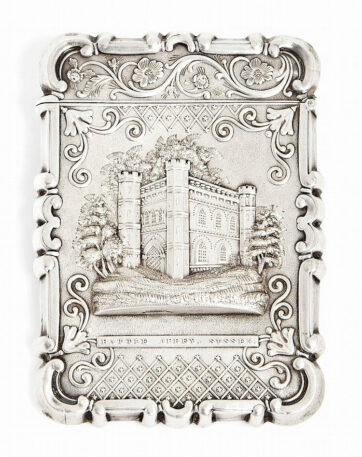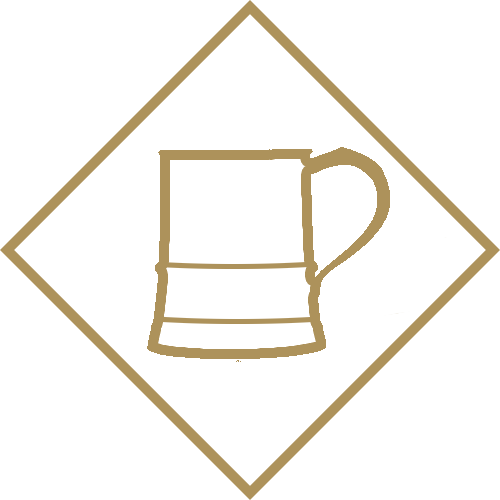The Ultimate Guide To Selling Antique Paul Storr Silver
Have you ever wondered what your piece of Paul Storr Silver is worth?
Find out more about the history of the silversmith Paul Storr and get in touch using the form below for a free valuation.
Paul Storr was a renowned silversmith who worked in the late 18th and early 19th centuries. He was known for his exquisite designs, attention to detail, and high-quality craftsmanship. His work is highly sought after by collectors and antique enthusiasts alike.
Storr started his career as an apprentice under the silversmith Andrew Fogelberg in London. He then went on to work for various prominent silver firms before finally opening his own shop in 1793. His reputation quickly grew, and he became one of the leading silversmiths of his time.
His pieces were known for their intricate decorations, often featuring elaborate engravings and ornate handles.

What Is Your Silver Worth?
How To Sell: Auction or Private Sale?
Mark Littler Ltd. are one of the only independent advisers in the antique industry. We offer trusted, independent advice to help you sell your silver for the highest possible price.
Selling at an auction might provide your silver with greater exposure. However, with a combined average of 45% in gross buyers’ and sellers’ fees, this approach might prove to be a false economy.
Conversely, finding a private buyer for your silver through our services could net you 33% more than if you sold it via auction, as our fees are only 12%.
What We Do For You
Simply fill in your contact details below and you will get an automatic referral to a leading silver auction expert who will give you an auction estimate and advise on how to sell with them. We will also see if we are able to get any offer from our private clients.
If we get any offers we will send these within 7 days. All offers are without obligation and there are no fees to pay us if you decide to sell at auction.
Silver Valuation Tips
To get the most accurate valuation of your silver simply ensure you provide the following information:
- What condition is your silver in? Let us know if there are and dents or heavy scratches in the silver.
- How heavy is your item? Please provide a measurement in grams if you can as this helps us determine the gauge of the silver. For instance a silver teapot can weigh as much as 1,000g or as little as 250g. Outwardly the design may look identical but the gauge of the silver is much heavier. This is important as items made from a better gauge of silver were often made by better makers for the upper classes, and as such will have a big impact on the value.
- PROVENANCE! Who owned your item before you did? Is there an interesting presentation inscription on your item that might shine light into it’s former life?
Important Note: this is a valuation service and not a hallmark identification service. Please see this page to learn how to read your hallmarks.
Free Expert Silver Valuations
Use the form below or send images of your silver to be connected with a silver expert.
Get In Touch With A Silver Specialist
"*" indicates required fields
A History of Paul Storr Silver
The early life of Paul Storr
Paul Storr is one of, if not the, most outstanding English silversmiths. The son of a silver-chaser turned innkeeper, Storr was baptised in London on the 28th October 1770 and would rise to both fame and fortune through the 19th century. He was apprenticed to the silversmith Andrew Fogelberg in around 1785, although the exact date is unknown. Apprenticeships in this time typically lasted seven years, and we know he was made free in 1792. Storr then went into partnership with William Frisbee, although this partnership was short lived and Storr registered his own mark in 1793.
Storr was a master of his medium and could transform two dimensional designs into three dimensional pieces of plate like no other. His early work is in the classical style favoured just before and during the Regency (1811-1820). These early items show more restraint than the works he would go on to produce.
Arguably his most important early commission was the Portland Font, a 22ct gold font commissioned by the 3rd Duke of Portland (1738-1809) on the birth of his first grandson, William Henry. The font was designed by Humphrey Repton (1752-1818) and executed by the workshop of Storr, whose attention to detail and sympathy with the metal are clear to see.
Rundell, Bridge & Rundell
Rundell, Bridge & Rundell had a huge influence upon Storr’s career, therefore a brief history of this prestigious firm of Silversmiths is warranted.
Phillip Rundell went to London in 1767 to work as a shopman in the silversmith firm of William Theed and William Pickett. Upon the death of Theed he became a partner in the firm and later took sole ownership by reputedly manipulating Pickett into selling his half of the firm in 1785.
In the meantime a man called John Bridge began working at the firm. He went into partnership with Rundell in 1788 thanks to a loan from his cousin. This cousin not only lent him the money to buy into the business but also allegedly provided him with a link to the Royal household. It is reputed that following a spout of ill health, George III left Windsor to recuperate at Weymouth, and his interest in agriculture led him to visit the cousin’s nearby farm. A relationship grew and during one of his visit’s the cousin told George III about Rundell and Bridge’s business in London and begged the King for his support. The King was enchanted by the shop and invited John Bridge to meet the Queen, the rest of the Royal Family, members of the Court and other nobility.
In 1797 Rundell & Bridge were appointed Jewellers, Gold and Silversmiths to the Crown, and also attained the Royal Warrant from HRH The Prince of Wales and The Duke of York, fuelling the success of the firm. At around this time further capital was provided by Rundell’s nephew who joined as a partner, creating Rundell, Bridge & Rundell (RB&R).



































